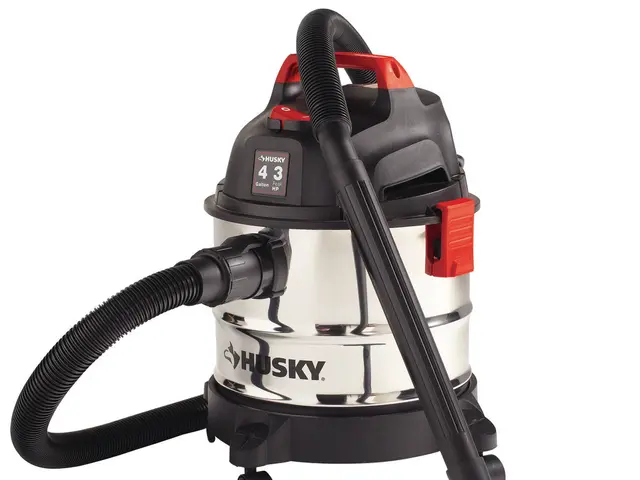Sluggish Gmail Inbox? Here Are Some Solutions to Speed It Up
A Fresh Spin on Speeding Up Your Gmail:
For over 1.8 billion folks worldwide, there's nothing more dominant than Gmail when it comes to communication. Popping up like a legend in 2004, this email service from Google is as ubiquitous as the iPhone, a Windows laptop, and the vast expanse of the great outdoors.
I've been a part of the Gmail gang since 2005 and still rock my original account from 2012. Emails have become the center of my life, but it can sometimes feel like a merry-go-round hopelessly stuck in slow motion. Overloaded with a barrage of emails and attachments, I find myself incessantly clicking empty seconds awaiting my next email to open and another waiting to display those pesky files.
Gear Newsletter: Reviews, Guides, and Deals
Terms of Service: Class Action Waiver and Arbitration Provisions: Privacy Policy
My quest to liberate my inbox from this dilemma led me down a path of discovery wherein I stumbled upon some nifty tips and hacks for speeding up Gmail. Google isn't super forthcoming with guidance onOptimizing Gmail speed, probably because they don't want to admit the beast sometimes slows down a mite. I opted for the trial-by-fire approach and here's what I learned!
Perform Surgery, When Necessary
My Gmail account is suffering from a dreadful case of clutter. It needs some heavy-duty surgery to regain its health and vitality. I started by disabling a handful of extensions and add-ons for Gmail, but the impact was minimal.
I theorize (and I did inquire Google about this, but they remained tight-lipped) that Gmail takes extra time loading emails and executing searches when it's tasked with keeping tabs on years upon years of enormous files. I hold onto all emails for the sake of Easy access to things like old tax forms, contracts, and even some long-lost memories. However, with nearly 652,000 emails occupying 162 gigabytes of precious storage, it's high time for some decisive action.
To tackle emails with the largest attachments, we can leverage Gmail's built-in search operators. In the search bar, kick things off by typing "in:anywhere larger:40M" and peruse the search results displayed in your subfolders. If you only find a few messages with massive attachments, move on to "in:anywhere larger:25M" for refined results. Carefully review these and determine if they're worth keeping or destined for the trash can.
A feature you may find useful for this endeavor is the Gemini AI for Gmail bot - perfect for sifting through emails and pouncing on those with large attachments.
Once you've made your selections, make sure you smooth the scene by emptying the trash can as well. On the left side, click Trash, then More, and finally Empty trash now.
One of Gmail's strengths lies in its ability to assign labels to emails to make a busy inbox easier to navigate. However, these labels can also become a burden, serving merely as additional items for Gmail to manage. Unearthed treasures from the dusty past, old, and unused labels are simply bogging down the works. Unfortunately, there's no quick and easy way to remove many labels at once. You'll need to eradicate them one by one. To do this, click on the Manage Labels option in the left-hand menu bar of Gmail. Browse your list of labels, then select Remove label for any labels that you no longer need or find relevant. I axed an astonishing 350 labels in a single swift strike! The emails remain, but the excess baggage of obsolete sorting systems is history.Gear Newsletter: Excellent resources for tech enthusiasts. Covering the latest devices, gaming guides, deals, and more.
Terms of Service: Class Action Waiver and Arbitration Provisions: Privacy Policy
You can reverse the tides of clutter and improve your experience with Gmail by implementing these strategies:
1. Attack the Giants
Gargantuan attachments guzzle storage and grind Gmail's performance to a standstill. Here's how to identify and eradicate them:
- Locate large attachments: In Gmail, initiate a search using the search bar and enter the command: (Substitute 'size' with a Megabyte size limit that suits your needs.)
- Take stock and erase: Carefully select all emails containing large attachments and bid them adieu.
- Dispose of the carcasses: Empty the Trash bin to permanently eliminate these emails and recapture precious space, as items in Trash continue to take up your allotted storage[4].
- Consult Google Drive and Photos: Since Gmail storage is shared with Drive and Photos, expunging large files from there can also help restore balance[4].
2. Cull the Old and Useless
Antiquated labels can make your inbox hard to navigate. Here's how to tidy things up:
- Review labels: Check the left sidebar in Gmail to view all your labels. Hover over each label to see if it's still useful or if relevant emails still exist among them.
- Reap what's no longer needed: Right-click on a label and select "Remove label" to off it. This action removes the label from the emails, but the emails themselves remain.
- Reorganize for optimal visibility: If you wish to keep emails, consider moving them to more pertinent labels or archiving them. Archiving emails removes them from the inbox but keeps them readily accessible for future reference[5].
3. Additional Tips for Taming the Clutter
- Purge the newsletters and promotions: Regularly comb through your subscriptions and chop those you don't want to receive anymore to prevent further clutter[2][1].
- Leverage filters and automated rules: Create filters to effortlessly categorize, archive, or delete specific sorts of emails. This helps keep your inbox svelte with minimal manual interference[1][2].
- Archive or offload old conversations: Archive emails you need to retain but don't require immediate attention. Delete those that no longer matter[2][4].
- Keep Spam and Trash clean: Periodically empty these folders to maintain your account's performance and preserve space[4].
Summary Chart
| Action | Efficient Implementation ||-------------------------------------|-----------------------------------|| Cut the Large Attachments | Search with , delete || Manage the Old Labels | Review, remove unused labels, re-categorize or archive emails || Cast off the unnecessary newsletters| Browse subscriptions, cut ties via "Unsubscribe" links || Automate and organize | Set up filters for auto-organization and deletion || Archive or delete old emails | Archive or delete irrelevant or outdated conversations || Cleanse Spam/Trash | Periodically sweep these folders |
By following these guidelines, you'll restore your Gmail experience to a state of speed and organization, making your communications flow like a well-oiled machine[1][2][4].
- Utilizing the Gemini AI for Gmail bot can assist in sifting through emails with large attachments, making it easier to identify and delete them.
- To tackle emails with the largest attachments, use Gmail's built-in search operators. Type "in:anywhere larger:40M" in the search bar to view the results, and then decide if they're worth keeping or if they should be deleted.
- The newsletters you receive can contribute to clutter in your inbox. Regularly review your subscriptions and unsubscribe from those you no longer find useful.







